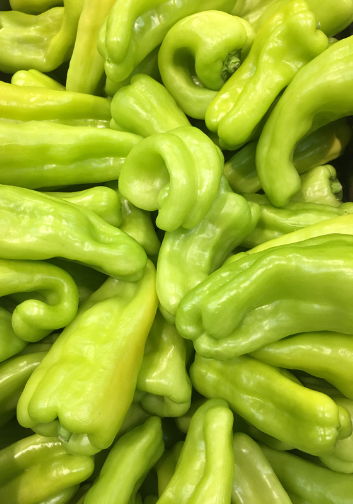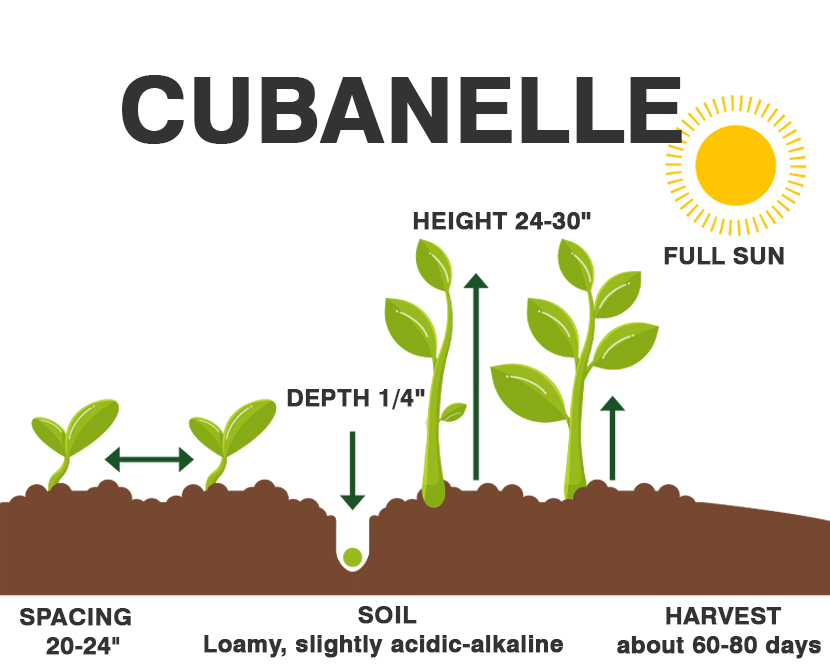The Cubanelle pepper, also known as “Cuban pepper” and “Italian frying pepper”, is a variety of sweet pepper of the species Capsicum annuum.

| Common Name | Cubanelle |
| Botanical Name | Capsicum annuum |
| Family | Solanaceae |
| Plant Type | Perennial, vegetable |
| Size | 1–4 ft. tall, 1–2 ft. wide |
| Sun Exposure | Full sun |
| Soil Type | Moist, well-drained |
| Soil pH | Acidic, neutral |
| Bloom Time | Summer |
| Hardiness Zones | 9–11 (USDA) |

When to Plant?
This will be determined by your planting zone. There is a final frost date for each area. As a result, you can plan your gardening activities around this date. Check our Frost Dates Across North America: First & Last Frost Dates Chart. However, the date will not be the same for every plant.
How to Plant
Like all types of peppers, it’s best to plant your Cubanelle pepper plant transplants or seeds when temperatures have warmed in spring. Daytime temperatures should be between 70 and 85 degrees Fahrenheit with nighttime temperatures ranging between 60 and 70 degrees. Cool temperatures produce slow growth, and if it’s too cold, the seeds may fail to germinate.

If growing in the garden, select a location that is situated out of strong winds and in full sun and amend well-drained soil with compost or well-rotted manure. If growing in a pot, select a 3-gallon pot with bottom drainage holes and fill with a rich, well-drained potting mix.
If planting seed, plant them about 1/4 inch deep, spacing multiple seeds about 2 feet apart. If you are planting Cubanelle transplants, plant at the same depth as they were growing in their nursery pots, spacing multiple plants 2 feet apart and multiple rows 2 feet apart. For potted Cubanelles, you can plant several seeds and thin to the healthiest one once they reach 3 or 4 inches tall. As with transplants in the garden, plant one Cubanelle pepper plant per 3-gallon container and plant at the same level it was growing in the nursery pot. After planting, water the seeds and transplants well, as seeds require moist conditions to germinate.
How to Cultivate
To get an early start with your pepper plants, particularly in the North, cover the prepared bed with a dark-colored polyethylene mulch at least a week before transplanting. This will heat the soil beneath and provide a better growing condition for young pepper plants. The mulch will also help the soil retain moisture throughout the season as the pepper plants grow.
Prefers well-drained, fertile soil high in organic matter, pH 6.0 to 7.5. Can tolerate slightly alkaline soil. Prefers plentiful, consistent moisture. Can tolerate drought, but the quality and flavor of leaves suffer.
Prepare the bed by turning the soil under to a depth of 8 inches. Level with a rake to remove clumps of grass and stones.
Dig a hole for each plant large enough to amply accommodate the root ball. Carefully remove the plant from its pot and gently loosen the root ball with your hands to encourage good root development.
Fill the planting hole with soil to the top and press the soil down firmly with your hand, leaving a slight depression around the plant to hold water.
Use the plant tag as a location marker. This is particularly important if you are trying different varieties. It is very difficult to tell which variety is which from the foliage.
Water thoroughly, so that a puddle forms in the saucer you have created. This settles the plants in, drives out air pockets, and results in good root-to-soil contact.
Peppers may also be planted in containers. Use a container at least 18-24 inches wide and deep, and use a commercial potting mix rather than garden soil.
How to Harvest
Cubanelle pepper plants require regular moisture for healthy growth, especially when the fruit is setting and growing. Water to a depth of at least 6 inches, keep the soil moist through regular irrigation and don’t allow the soil to completely dry out. You can help the soil retain moisture and cut down on unwanted weed growth that robs the pepper plant of needed moisture by applying several inches of mulch around the planting site.
When it comes to harvesting, allow the Cubanelles to reach full size before removing them from the plant. You can harvest the peppers when they are in the green stage or allow them to become sweeter and ripen to orange or red before removing them. Don’t pull the peppers off the plant, as you could break the plant’s stems. Instead, cut them off using clean scissors or pruning clippers. You can store the harvested peppers in the refrigerator, where they’ll stay fresh for up to three weeks.
Hydroponics
Germination: Start by germinating Cubanelle pepper seeds in a small tray or pot filled with seed starting mix. Keep the soil moist and warm (around 70°F) until the seedlings emerge, which usually takes about 5-10 days.
pH range: To ensure healthy growth, maintain the pH of the nutrient solution between 5.5 and 6.5.
EC: Should be around 1.5-2.5 mS/cm. This level provides enough nutrients for the plant to grow healthily.
PPM: The recommended PPM (parts per million) for Cubanelle pepper is around 1400-1800 ppm. This level will provide sufficient nutrients for the plant to thrive.
Humidity: Cubanelle pepper requires moderate to high humidity levels. Maintain the humidity level around 60-80% to prevent the plant from drying out.
Light hours: Provide the plant with at least 12-14 hours of light per day.
Temperature air: Aim to maintain air temperatures between 70°F to 85°F during the day and 60°F to 70°F at nigh.
Temperature water: The nutrient solution should be maintained at a temperature between 65°F to 75°F. This temperature range ensures that the roots of the plant can absorb nutrients effectively.
With these guidelines, you should be able to grow healthy plants hydroponically. Good luck, and happy growing!



